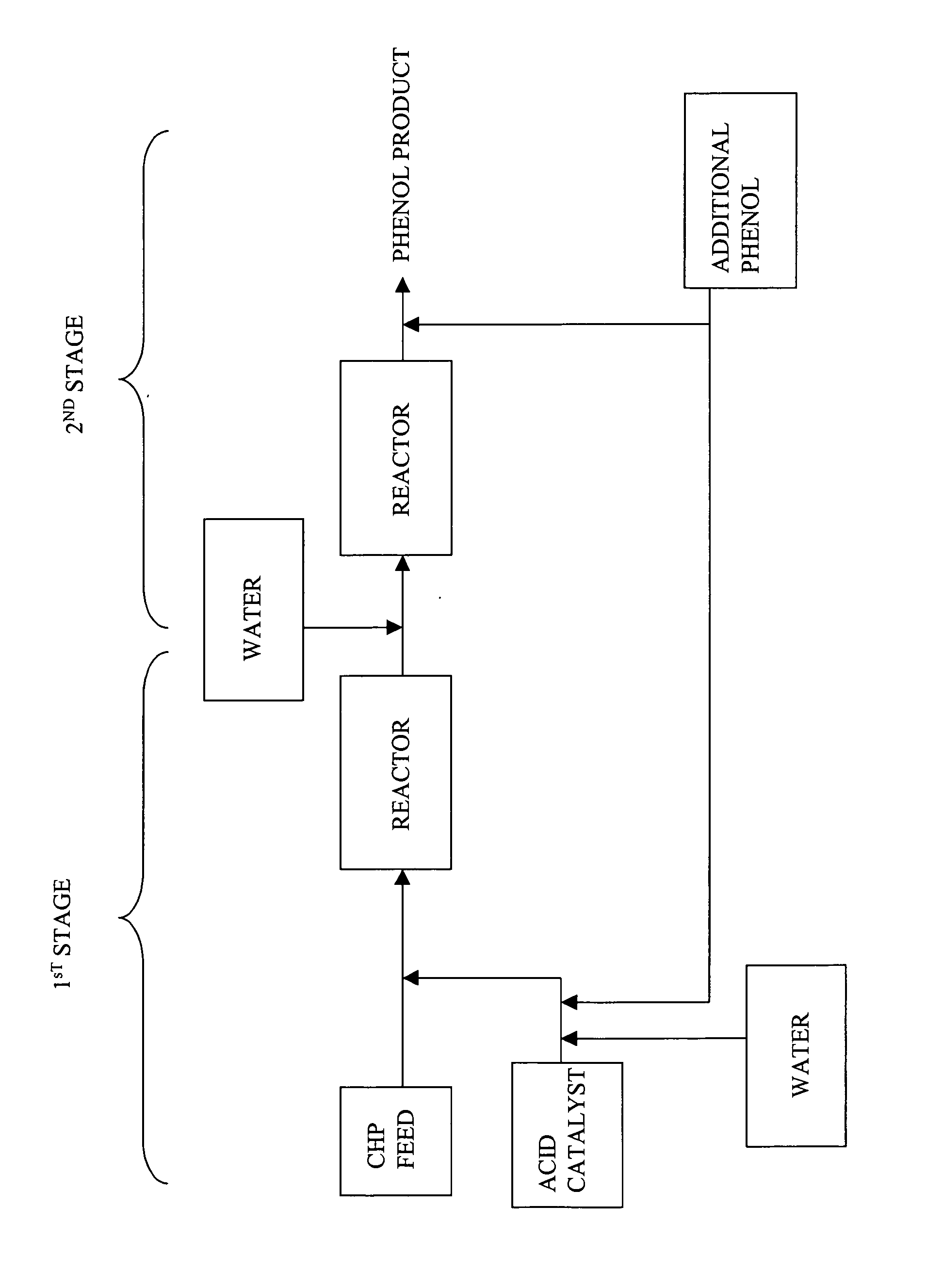Process for producing phenol
a technology of phenol and acetone, which is applied in the field of producing a phenol stream, can solve the problems of reducing the quality of phenol products, reducing the efficiency of phenol production,
- Summary
- Abstract
- Description
- Claims
- Application Information
AI Technical Summary
Benefits of technology
Problems solved by technology
Method used
Image
Examples
examples
[0036] In these Examples, the analysis of hydroxyacetone was carried out on an Agilent 6890 Gas chromatograph (GC). GC separation was carried out on glass column with a length 24 inches &¼ inch outer diameter, configured for on column injection, packed with chromsorb 102 80 / 100 mesh, with helium as carrier gas at 30 milliliters per minute (ml / min). The injector temperature was maintained at 160° C. and the detector temperature was maintained at 250° C. The initial column temperature was kept at 110° C. for 3 minutes hold time, this was followed by a temperature increase at 7° C. per minute to reach 150° C., held for 2 minutes, at 150° C., followed by a temperature increase at 10° C. per minute to reach 200° C. and held at 200° C. for 15 minutes. The column was calibrated with standard hydroxyacetone (obtained from Aldrich Chemical Company, 97% pure) at a concentration ranging from 5 parts per million (ppm) to 244 ppm made in a 50:50 mixture of cumene and phenol. Hydroxyacetone in th...
examples 1-3
[0042] In these examples, CHP was decomposed in a continuous 2-STEP process to obtain a phenol product, wherein the molar ratio of phenol to acetone was greater than or equal to 1.2:1, and the effluent produced from the first step contained at least 1% residual CHP. Table 3 illustrates the composition of the feed stream. The process generally included adding CHP to an agitated mixture of phenol, acetone, and sulfuric acid.
[0043] In the first step of the continuous process, a typical synthetic feed composition having phenol, acetone, and CHP was fed to a glass reactor fitted with a condenser having a capacity of about 150 milliliters through the respective inlets for the feed stream and acid catalyst. The reactor was also fitted with a temperature probe to monitor the temperature and external heating / cooling jacket to maintain the temperature. The contents of the reactor were continuously stirred with a magnetic stirrer. The composition of the feed stream and amount of catalyst adde...
PUM
| Property | Measurement | Unit |
|---|---|---|
| Temperature | aaaaa | aaaaa |
| Temperature | aaaaa | aaaaa |
| Temperature | aaaaa | aaaaa |
Abstract
Description
Claims
Application Information
 Login to View More
Login to View More - R&D
- Intellectual Property
- Life Sciences
- Materials
- Tech Scout
- Unparalleled Data Quality
- Higher Quality Content
- 60% Fewer Hallucinations
Browse by: Latest US Patents, China's latest patents, Technical Efficacy Thesaurus, Application Domain, Technology Topic, Popular Technical Reports.
© 2025 PatSnap. All rights reserved.Legal|Privacy policy|Modern Slavery Act Transparency Statement|Sitemap|About US| Contact US: help@patsnap.com

